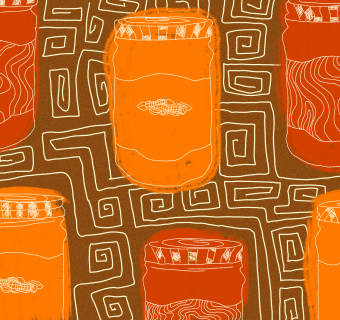Story By: Madeline Baker
I love a good podcast. Seriously, I listen to podcasts almost everyday when I’m getting ready in the morning, on my way to class, working out, or getting ready for bed. One of my favorite podcasts is This American Life. If you haven’t heard of it, you should really get into it. It’s hosted by Ira Glass and tells amazing stories each week about different people from different backgrounds. One Monday afternoon, I was listening to a particular episode that discussed identity: who we are, and how we define ourselves. A Pakistani-American woman, Mariya Karimjee, began talking about her identity as a female, and how, for a long time, she had never thought about her sexuality and how it related to her identity. At 15 years old, she asked her very conservative Muslim mother if it felt good to have sex. Her mother replied, “No, not for us.” That is when the woman revealed that at 7 years old, her mother had taken her to a local doctor in Karachi, Pakistan, who told her it was time to get rid of “a bug.” That same day, she went to a family friend’s house, lay down on a tarp that was set before her, and held her mother’s hand as the older woman performed a female circumcision. When I heard this story, I sat up on my bed in shock. This was a real thing? People did this to their daughters? How is this humane at all?
Female genital mutilation (FGM) goes by several names, including female circumcision, female genital cutting, and clitoridectomy. Although varying in name and method, the motive of FGM remains unchanged: to curb the sexual desire of young women and preserve their sexual honor before marriage. This practice is most common in eastern, northeastern, and western African nations, as well as several countries in the Middle East and Asia. Most prevalent in some majority Muslim countries, FGM is not condoned by any Islamic authority, nor is it mention in the Muslim holy book, the Quran. Girls and young women between infancy and fifteen years of age are the most at risk for this dangerous, unnecessary, and sometimes life-threatening procedure. It is estimated that somewhere around 200 million women in the world today have undergone this procedure. The purpose is completely non-medical, and there has been no evidence to prove that FGM is effective in eliminating young women’s sexual desire. Although immediate consequences such as bleeding and fever may subside within hours, some long-term effects of FGM, according to the United Nations Population Fund are irreversible. These long term-effects can include chronic pain, increased risk of infection, and complications during childbirth. You may be thinking, what is my part in all of this? Why should I care? Well, if you’re reading this that means you’re probably a human. FGM is a violation of human rights, the rights allotted to us humans simply because we exist. The girls and young women who survive FGM are victims of a violation of these rights to exist and a violation of their right to choose what it is they want to do with their bodies. Forced to undergo a painful and damaging procedure, these young women are robbed of an important aspect of female sexuality, the pleasure that comes from sex with a trusting and respectful partner. Because FGM is not usually performed by a medical professional, but instead by a community elder, the chances of complications during the procedure are extremely high. Along with physical damage, the psychological repercussions of FGM are also pervasive, as victims of FGM often find themselves unwilling to trust sexual partners or hesitant to even begin romantic relationships at all. Unfortunately, it is this psychological control and ultimate fear of sex among women that is the primary motive for performing these procedures. Specialized health agencies like the World Health Organization and other human rights coalitions condemn FGM. The difficulty in eradicating FGM lies not in religion but the cultural roots of the practice. FGM has been around in some form or another for hundreds of years, and is seen by many cultures as a purifying ritual that acknowledges a woman’s inferiority to men. Despite this tradition, it is hard to deny that this is a form of gender violence. Just like other forms of gender violence, the best way to combat the issue and eliminate its prevalence is to raise awareness. Organizations like 28 Too Many and Daughters of Eve have made it their mission to end this form of gender based violence and educate those who may not be aware of the harm, both physical and psychological, it causes. Because FGM is often seen as a “women’s issue,” it is difficult for some men in patriarchal societies to view this as a human rights issue. In recent years, however, this mindset is changing, as more and more men have become involved in the mission to raise awareness against gender-based violence and FGM. Campaigns like Men Speak Out encourage men to act as allies for those girls and young women who are at risk for this procedure. They give a voice to those who have been silenced by a male-dominated culture. It’s hard for me to grasp that because of a seemingly routine cultural tradition, some women will never be comfortable with their sexuality. From an early age, girls put trust in female figure that surround them. FGM destroys trust and creates insecurity. Gender violence in any form is not ok, and just like rape and other forms of sexual assault, FGM can be prevented through awareness, education, and advocacy. As with any social or cultural change, action begins at the individual level. To find out more about FGM, its consequences, and what you can do to help, visit www.stop-fgm-now.com.







